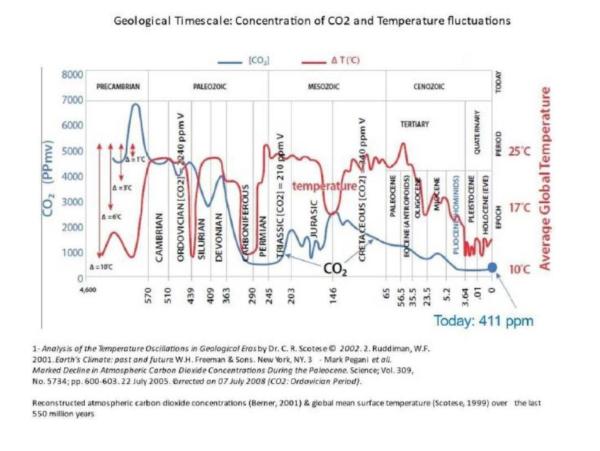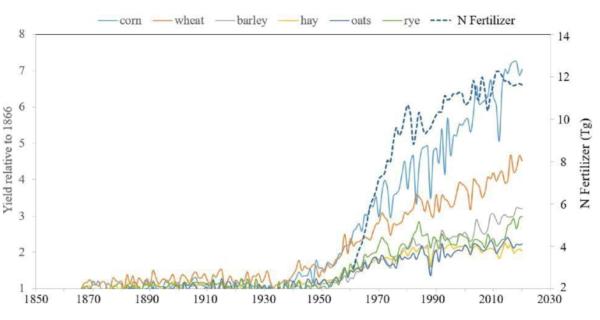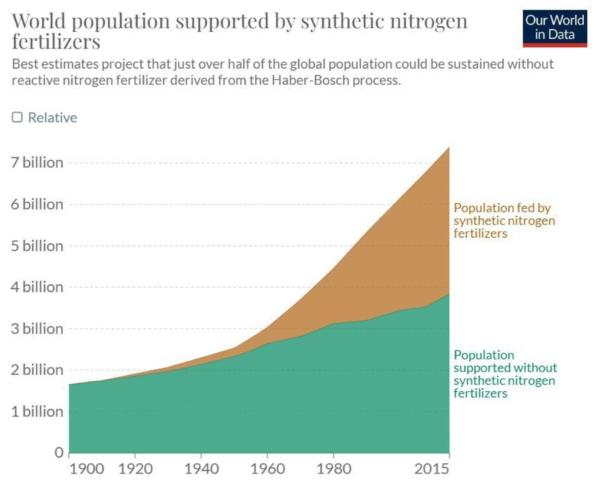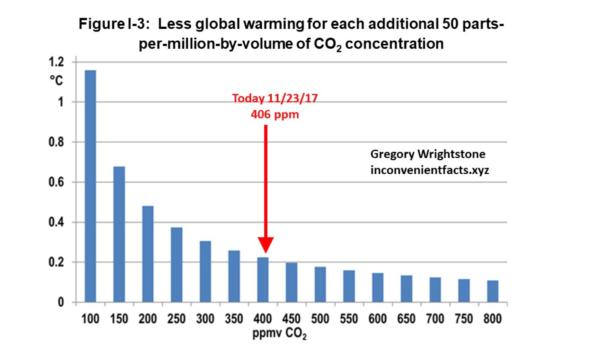[In Layman's Terms"]
Statement # 10 (Proposed)
Additional carbon beyond 400-450 PPM where we are today (est) has no impact on the climate as all heat is absorbed in the first 400 PPM
Support: Sid Belzberg – Post # 1648/49/50 – 23/8/15
Part 1 (Of 3 Parts)
Two Princeton, MIT Scientists Say EPA Climate Regulations Based on a ‘Hoax’
Physicist, meteorologist testify that the climate agenda is ‘disastrous’ for America
Two prominent climate scientists have taken on the Environmental Protection Agency’s (EPA) new rules to cut CO2 emissions in electricity generation, arguing in testimony that the regulations “will be disastrous for the country, for no scientifically justifiable reason.”
Citing extensive data (pdf) to support their case, William Happer, professor emeritus in physics at Princeton University, and Richard Lindzen, professor emeritus of atmospheric science at Massachusetts Institute of Technology (MIT), argued that the claims used by the EPA to justify the new regulations are not based on scientific facts but rather political opinions and speculative models that have consistently proven to be wrong.
“The unscientific method of analysis, relying on consensus, peer review, government opinion, models that do not work, cherry-picking data and omitting voluminous contradictory data, is commonly employed in these studies and by the EPA in the Proposed Rule,” Mr. Happer and Mr. Lindzen stated. “None of the studies provides scientific knowledge, and thus none provides any scientific support for the Proposed Rule.”
“All of the models that predict catastrophic global warming fail the key test of the scientific method: they grossly overpredict the warming versus actual data,” they stated. “The scientific method proves there is no risk that fossil fuels and carbon dioxide will cause catastrophic warming and extreme weather.”
Climate models like the ones that the EPA is using have been consistently wrong for decades in predicting actual outcomes, Mr. Happer told The Epoch Times. He presented the table below to the EPA to illustrate his point.
Modeled climate predictions (average shown by red line) versus actual observations (source: J.R. Christy, Univ. of Alabama; KNMI Climate Explorer)
“That was already an embarrassment in the ‘90s, when I was director of energy research in the U.S. Department of Energy,” he said. “I was funding a lot of this work, and I knew very well then that the models were overpredicting the warming by a huge amount.”
Why Climate Change Policies Could Be Even Worse Than the COVID Lockdowns: Andrew Montford
Play Video
He and his colleague argued that the EPA has grossly overstated the harm from CO2 emissions while ignoring the benefits of CO2 to life on Earth.
Many who have fought against EPA climate regulations have done so by arguing what is called the “major questions doctrine,” that the EPA does not have the authority to invent regulations that have such an enormous impact on Americans without clear direction from Congress. Mr. Happer and Mr. Lindzen, however, have taken a different tack, arguing that the EPA regulations fail the “State Farm” test because they are “arbitrary and capricious.”
“Time and again, courts have applied ‘State Farm’s’ principles to invalidate agency rules where the agency failed to consider an important aspect of the problem, or cherry-picked data to support a pre-ordained conclusion,” they stated. The case they referred to is the 2003 case of State Farm v. Campell (pdf), in which the Supreme Court argued that “a State can have no legitimate interest in deliberately making the law so arbitrary that citizens will be unable to avoid punishment based solely upon bias or whim.”
According to Mr. Happer and Mr. Lindzen’s testimony, “600 million years of CO2 and temperature data contradict the theory that high levels of CO2 will cause catastrophic global warming.”
They present CO2 and temperature data indicating much higher levels of both CO2 and temperatures than today, with little correlation between the two. They also argue that current CO2 levels are historically at a low point.
 This chart shows CO2 levels (blue) and temperatures (red) over time, indicating little correlation and current levels of both at historic lows. (Source: Analysis of the Temperature Oscillations in Geological Eras by Dr. C. R. Scotese; Earth's Climate: Past and Future by Mark Peganini; Marked Decline in Atmospheric Carbon Dioxide Concentrations During the Paleocene, Science magazine vol. 309.)
This chart shows CO2 levels (blue) and temperatures (red) over time, indicating little correlation and current levels of both at historic lows. (Source: Analysis of the Temperature Oscillations in Geological Eras by Dr. C. R. Scotese; Earth's Climate: Past and Future by Mark Peganini; Marked Decline in Atmospheric Carbon Dioxide Concentrations During the Paleocene, Science magazine vol. 309.)“The often highly emphasized 140 [parts per million] increase in CO2 since the beginning of the Industrial Age is trivial compared to CO2 changes over the geological history of life on Earth,” they stated.
In addition, the scientists' testimony to the EPA stated that the agency’s emissions rules fail to consider the fact that CO2 and fossil fuels are essential to life on earth, particularly human life.
“Increased levels of carbon dioxide in the atmosphere create more food for people worldwide, including more food for people in drought-stricken areas,” they stated. “Increases in carbon dioxide over the past two centuries since the Industrial Revolution, from about 280 parts per million to about 420 ppm, caused an approximate 20 percent increase in the food available to people worldwide, as well as increased greening of the planet and a benign warming in temperature.”
 Synthetic fertilizers (dotted line) have increased crop yields dramatically since their introduction. (Source: crop yields from USDA; fertilizer usage from Food Agriculture Organization).
Synthetic fertilizers (dotted line) have increased crop yields dramatically since their introduction. (Source: crop yields from USDA; fertilizer usage from Food Agriculture Organization).More CO2 in the atmosphere leads to more plant growth and higher farming yields, they argued. In addition, synthetic fertilizers, which are derivatives of natural gas, are responsible for nearly half the world’s food production today. “Net zero” goals would reduce CO2 emissions by more than 40 gigatons per year, reducing the food supply proportionally, they said.
 The world's population is increasingly dependent on synthetic fertilizers, a derivative of fossil fuels. (Source: ourworldindata.org)
The world's population is increasingly dependent on synthetic fertilizers, a derivative of fossil fuels. (Source: ourworldindata.org)In addition to disregarding the benefits of CO2, they stated, the EPA’s emission rules and the global warming narrative that has been used to justify them are based on flawed data.
In addition to teaching physics at Princeton, Mr. Happer’s decades of work in physics has focused on atmospheric radiation and atmospheric turbulence, and his inventions have been used by astronomers and in national defense.
“Radiation in the atmosphere is my specialty,” Mr. Happer said, “and I know more about it than, I would guess, any climate scientists.”
His expertise, he said, “involves much of the same physics that’s involved in climate, and none of it is very alarming.”
The global warming narrative argues that as people burn fossil fuels, they emit higher concentrations of carbon dioxide into the earth’s atmosphere, which absorbs sunlight and creates a “greenhouse effect,” trapping the sun’s radiation and warming the earth.
But one aspect of CO2 emissions that global warming models fail to take into account, Mr. Happer said, is a phenomenon called “saturation,” or the diminishing effect of CO2 in the atmosphere at higher concentrations.
“At the current concentrations of CO2, around 400 parts per million, it decreases the radiation to space by about 30 percent, compared to what you would have if you took it all away,” Mr. Happer said. “So that’s enough to cause quite a bit of warming of the earth, and thank God for that; it helps make the earth habitable, along with the effects of water vapor and clouds.”
“But if you could double the amount of CO2 from 400 to 800, and that will take a long time, the amount that you decrease radiation to space is only one percent,” Mr. Happer said. “Very few people realize how hard it is for additional carbon dioxide to make a difference to the radiation to space. That’s what’s called saturation, and it’s been well known for a century.”century.”
 The "greenhouse effect" of additional CO2 does not increase in proportion to the amount of CO2 added (source: William Happer).
The "greenhouse effect" of additional CO2 does not increase in proportion to the amount of CO2 added (source: William Happer).In addition to scientific arguments about why global warming is overblown, the scientists also cite data showing large discrepancies between global warming models and actual observations. In some cases, Mr. Happer and Mr. Lindzen say, data has been disingenuously manipulated to fit the climate-change narrative.
See Parts 2 & 3 below
Bob A (As Group Secretary)


 !
!
Leave a comment: